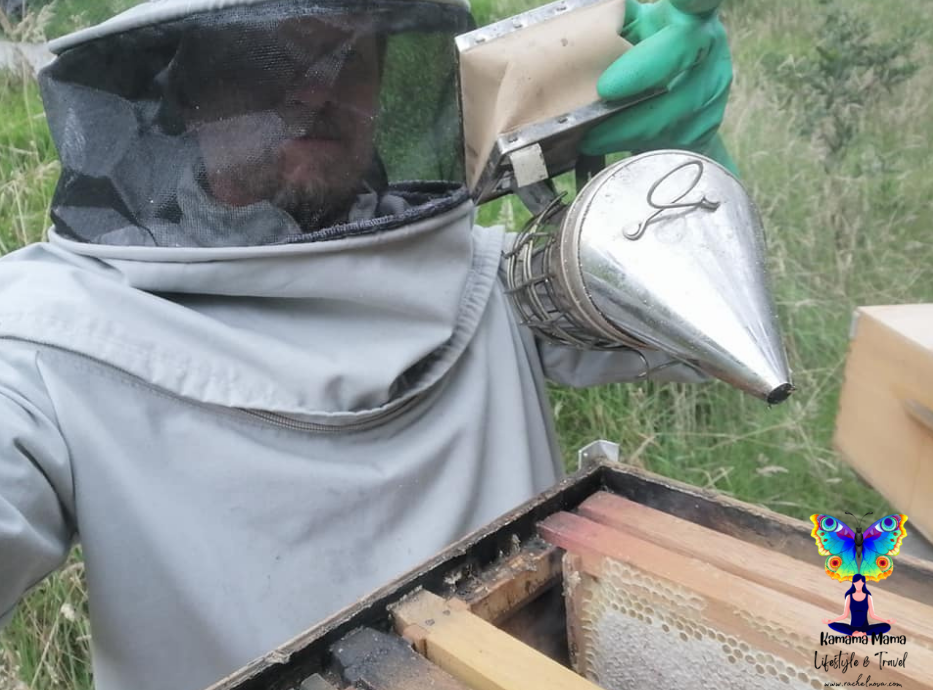
Interview-style chat with beekeeper – Cuenca, Ecuador.
Travel and LifestyleWelcome to my very first blog post!
I am thrilled to share this interview/conversation I had with beekeeper Alexander. Upon traveling around a bit during a professional visa in the country of Ecuador, I found Alexander. Well, I found honey, and then I found Alexander. I am always looking for local honey wherever I go. After getting some honey from him while living in Cuenca, Ecuador for a couple of months: I began making candles with his wax and learning a lot from Alexander along my bee journey. I enjoy learning about bees, and I feel lucky to know an expert. I thought it would be fun to write a post about some of the things I am learning from him.
These styles of posts/media (a bit of a story-telling journalist feel) are about the people I meet along my travels around the world. I like to think of my style with this kind of media as a form of journalism because I often notice my interest when talking to those, I meet typically revolves around this ethical desire to want to inform the public in a way that fosters curiosity, future discussion/learning, and informed choices. I have always liked to be a little investigator, especially when I was younger, I find myself more excited to learn when interviewing real live people with a notepad and pen in hand, jotting down some notes while totally engaged! I am a storyteller at heart.
So here, I investigate the world of bees by way of Alexander.

Alexander, thank you so much for talking to me about bees!
Hi Rachel, it is my pleasure.
What is your favorite part of being a beekeeper and how long have you been interested in working with bees? Also, what drew you to becoming a beekeeper initially?
All the aspects of the beekeeper routine are interesting. When you open the hive to inspect it, you get to notice every little thing in it like the smell, behavior, how much and what kind of food they have, how good the queen lays eggs, or looking for any disease.
I have been keeping bees for about five years and never kept them in another country but Ecuador. My uncle has kept bees in Russia (where I am originally from) for decades. My grandpa had been a beekeeper, too.
Initially, I couldn’t find real honey here in Ecuador. So, I decided to buy a couple of hives. Now there are thirty hives, and it has become a little business for me and my kids.
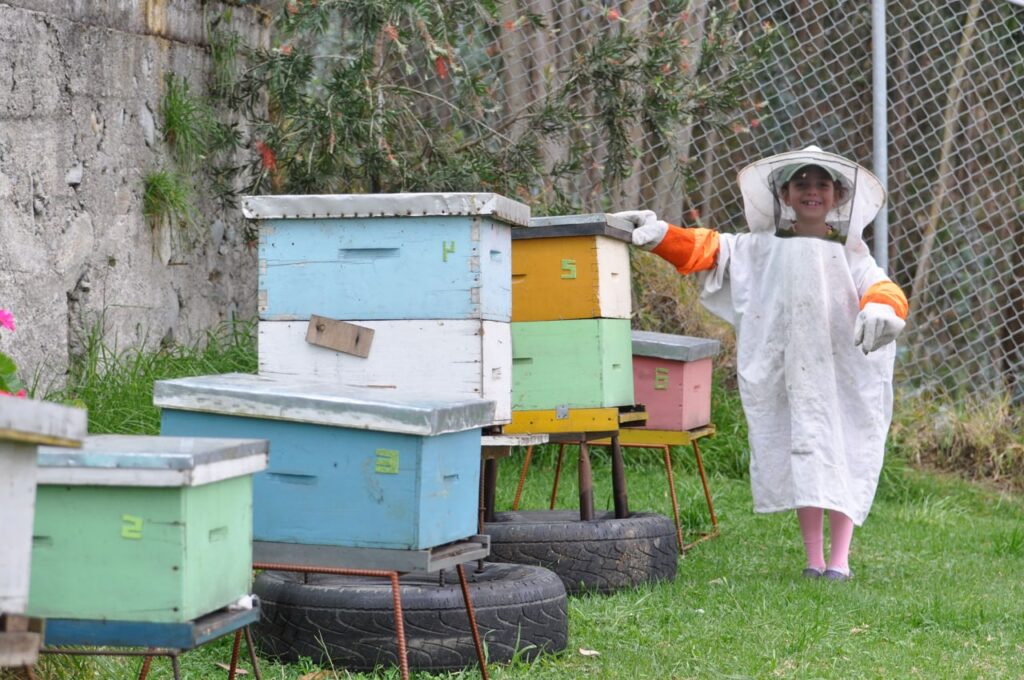
That is so interesting how beekeeping is in your roots growing up!
I have learned a lot from you about the magic of bees. Can you tell us a couple of fun facts about bees that you learned as a beekeeper?
• Only the female bees bring nectar into a hive and convert it into honey.
• Only female bees can sting.
• Female bees communicate through dancing.
• Worker bees live 40 to 60 days (wintertime — couple months), but queen bees live 4-5 years.
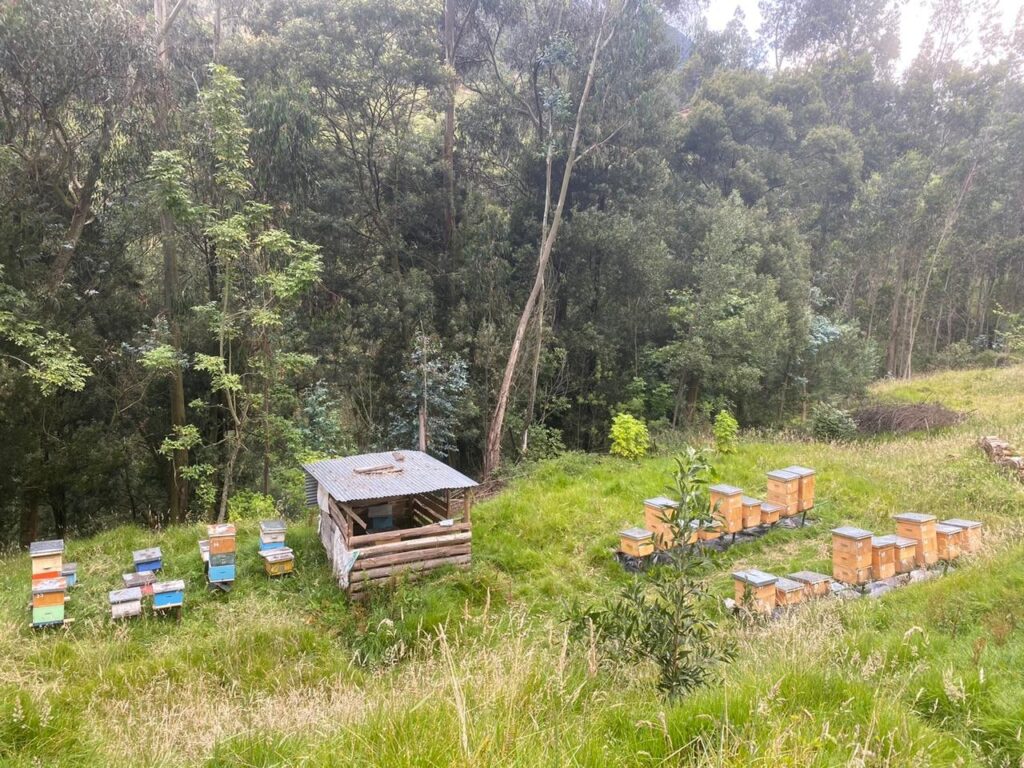
This is so fascinating!!!
When I started to make the candles with your wax, I remember telling you that the word to describe how they made me, and my environment feel was “harmony” they bring such a sense of harmony, balance, and peace to me. For me, I can sense the energy of the bees and the balance of masculine and feminine energy that they have, a sense of order and like the bees, all know what to do, what their jobs are, and they all work together. I am very thankful and humbled by their power for me and each day I gather more insights and reflections. I know you agreed with the word “harmony” but I am wondering, do you have any other words to describe the magic of bees for yourself and what they have brought to you in your life that you might be willing to share with us?
Harmony and balance – best words to describe bee colony (family).
Your wax has this really subtle sweet scent to it. Can you tell us how you make the wax?
Here is how I melt comb into the wax. (Depicted in the photos below.)
-
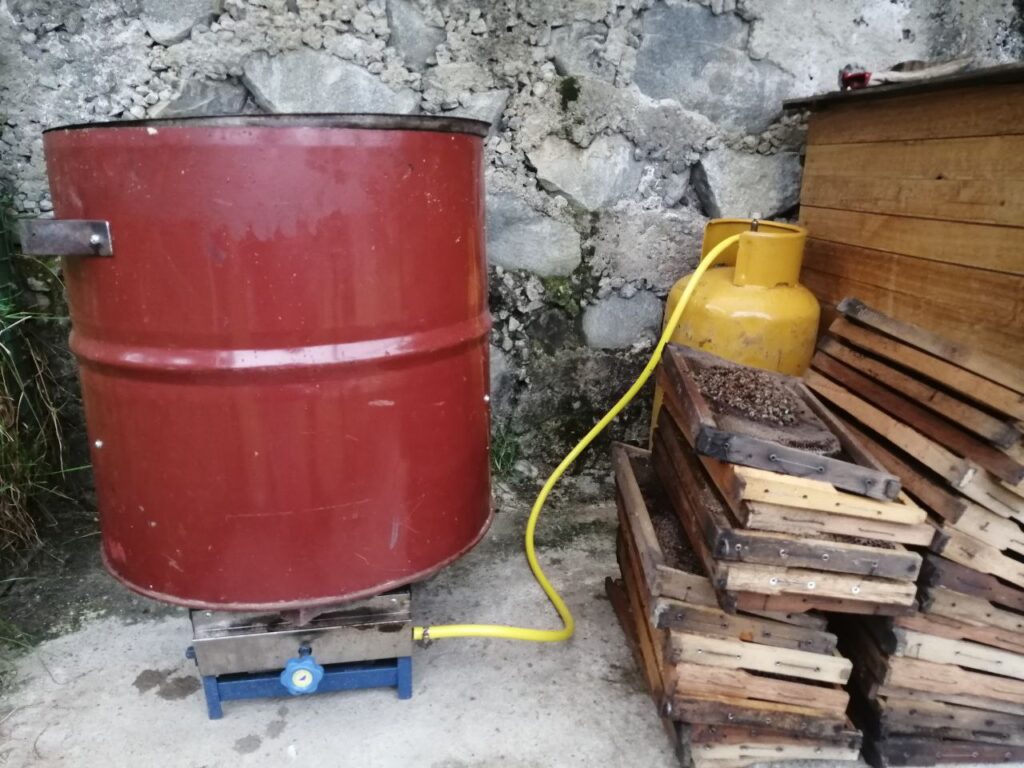
Melting comb into wax I. -

Melting comb into wax II.
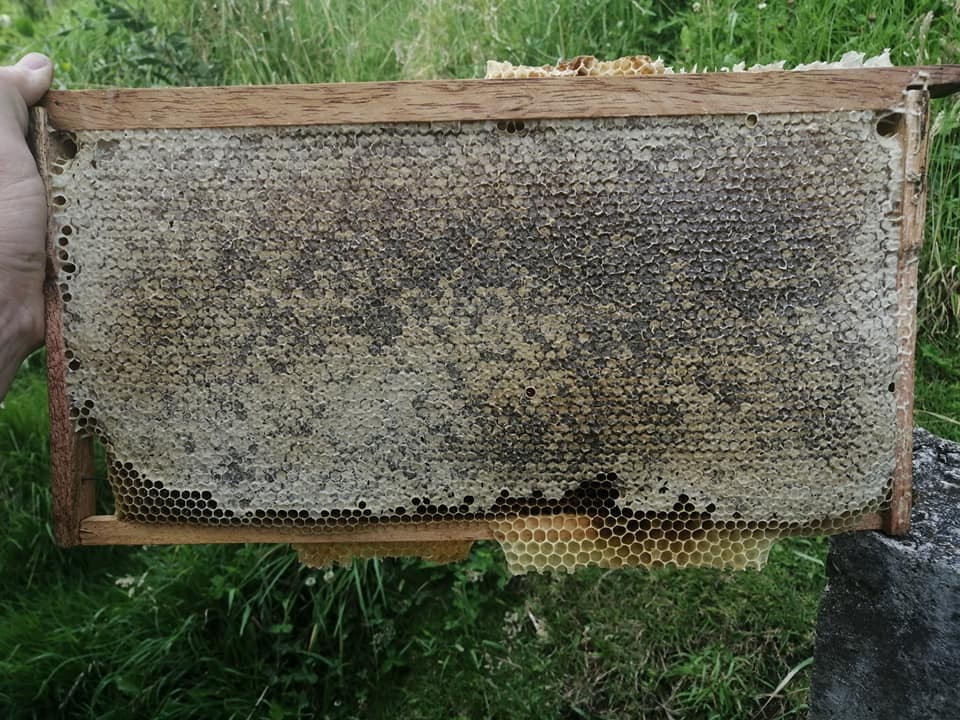
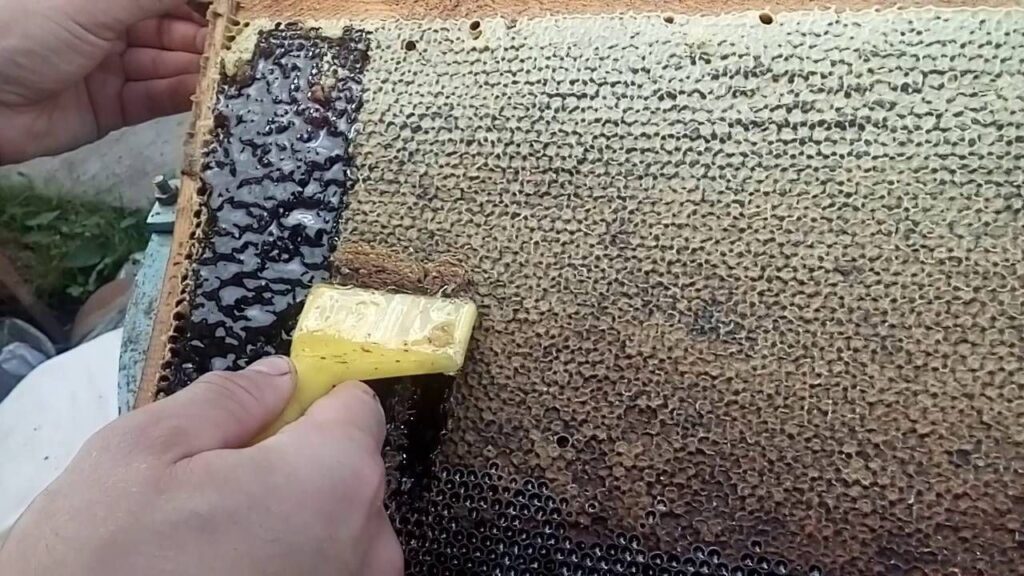
This is a honeycomb full of honey. (Depicted above) When you cut the cups, extract honey – you get an empty honeycomb which you can reuse or melt to get wax.
You told me that you can eat honeycomb and that it is good for your teeth! I thought this was so interesting as I have never heard that before! When I chew on it, it feels like I am eating and chewing on some beeswax. Is that all that the honeycomb is? Is it just like chewing on the wax that you melt for me? It gives the honey a muskier flavor when you include it in the jar with the honey which I also find interesting.
Yes, honeycomb is wax without the honey inside the combs.
When you eat a honeycomb with honey and pollen in it – you get vitamins, nutrients, and enzymes intact.
To produce 1 kg of vax bees, consume 8 kg of honey. In 120 g of vax (honeycomb) bees can store up to 4 kg of honey.
When beeswax candles burn, they clean the air like a great, natural air purifier. Beeswax produces negative ions when burned. These negative ions attach to positive ions (like dust, pollen, mold, odor, toxins) floating in the air and in this process clean the air.
I did not know that about the negative ions! Yet another reason I love my candles so much! I do notice a change in the air quality.
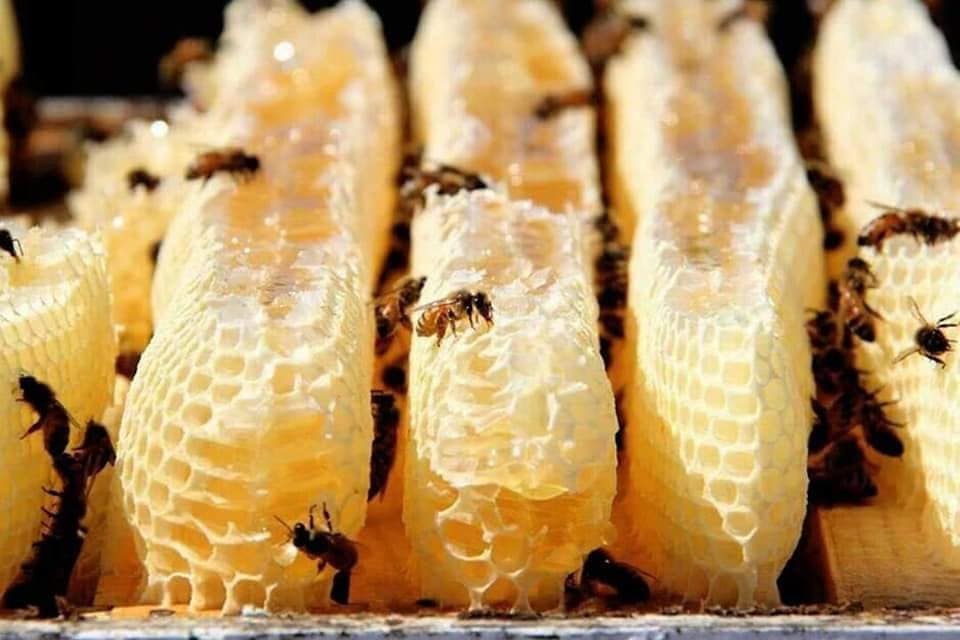
I am wondering if you can tell us the role of each bee. When you are watching the bees, can you tell which one is which and what they are doing? Also, are all these bees tightly bonded in a community or is it common for other outside bees to be flying around and join a bee cluster of bees or a “charm of bees”: my new favorite term. I am so curious about how they are on a social level.
There are three tips of bees in the family:
Queen plays a vital role in the hive because she is the only female with fully developed ovaries. The queen’s two primary purposes are to produce chemical scents that help regulate the unity of the colony and to lay lots of eggs (up to 2000 a day).
Drones are male bees and their sole purpose is to mate with the queen. They don’t work, don’t make honey, and can’t sting.
Worker bees are female and essential members of honey bee colonies. They forage for pollen and nectar, tend to queens and drones, feed larvae, ventilate the hive, defend the nest, and perform other tasks to preserve the survival of the colony (kind of cinderellas).
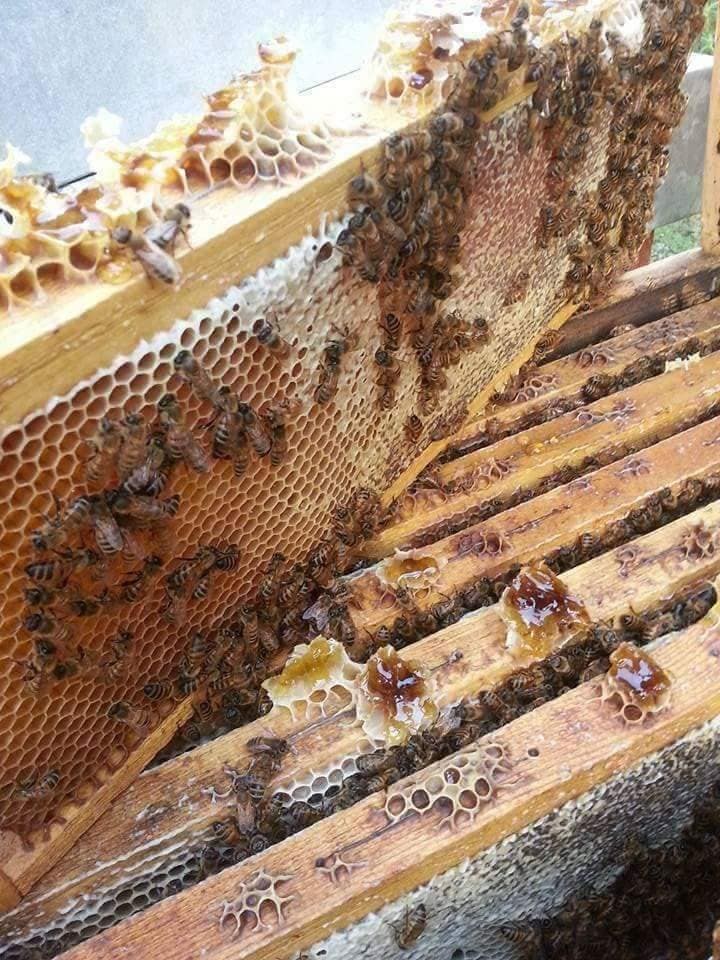
I was wondering if you could talk about the ethics of beekeeping as well as why bees are so important for our environment and how we can help to protect them or help them thrive?
By keeping bees, you make their life more comfortable and predictable. If bees don’t like something – they are free to go and they go.
When bees collect nectar or pollen they pollinate plants, which means they carry pollen between plants of different sexes to fertilize them, or even between different parts of the same plant, which help plants reproduce. Bees even help plants survive by preventing inbreeding.
When you keep bees – you treat them when they are sick, you give them food if they don’t have it, you give them a new queen if old died, you give them a purpose by providing work (extracting honey). If bees are not busy – they degenerate and die at the end.

*Additional description from photo depicted above:
These are older worker bees that Alexander calls stranger bees (because they are on the frame with the brood) and cannot feed the brood because they are getting too old. Their duty is to bring nectar, pollen, water, and protect the hive while the younger worker bees feed the brood.
Does being a beekeeper ever make you look at life differently – you grew up around bees because of your grandfather and uncle so maybe it is just part of you and your norm but just curious if any personal insights come to mind for you that you could share?
Keeping bees make me more observant around and understanding life.
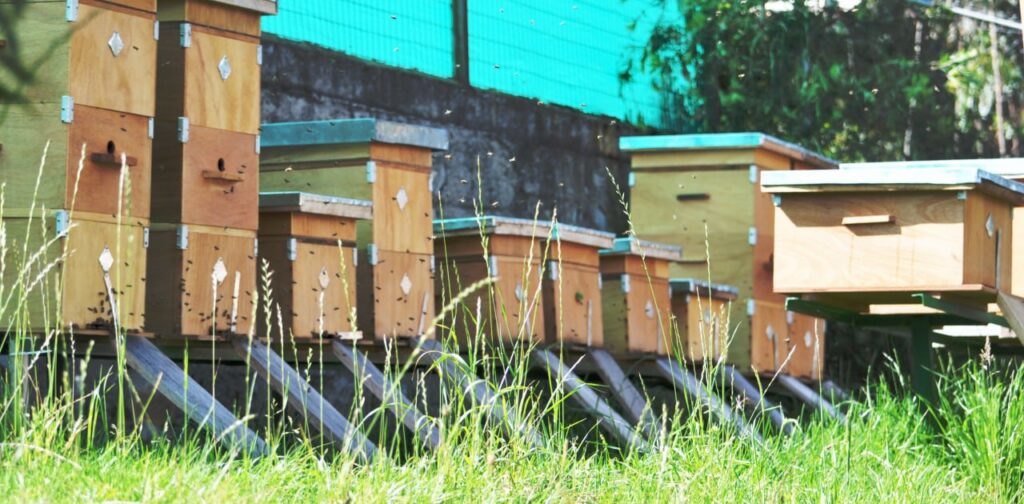
I thank you so much for being the first person I interviewed during my travels and life in Ecuador. It is such a pleasure to know you and learn from you. Thank you for keeping the bee magic alive and well inside of me and for embracing my enthusiasm and curiosity about bees.
You are very welcome, Rachel, have a nice day!
You too!
End.
All images © Miel de Cuenca
I hope you enjoyed reading along with our conversation!
Yours truly,
Rachel Howard, Journalist & Adventurer

Archives
Calendar
| M | T | W | T | F | S | S |
|---|---|---|---|---|---|---|
| 1 | 2 | 3 | 4 | |||
| 5 | 6 | 7 | 8 | 9 | 10 | 11 |
| 12 | 13 | 14 | 15 | 16 | 17 | 18 |
| 19 | 20 | 21 | 22 | 23 | 24 | 25 |
| 26 | 27 | 28 | 29 | 30 | 31 | |